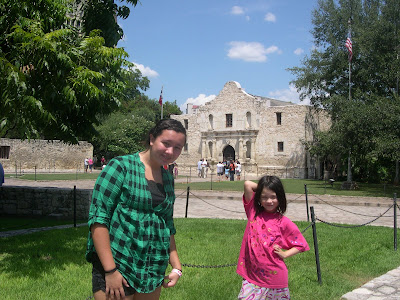Hill Country Ramble
On August 16, somewhere not far from Blanco, Texas, I was driving in a car commercial -- empty rural road, good scenery, wandering attention -- when suddenly woooooo! A loud siren from directly behind has a way of focusing your wandering attention. It didn't take long for my brain to process the following, must faster in fact that the time it takes to write or read it: A cop! He's pulling me over! Am I speeding? No, I'm not. What for then?
I slowed down, then noticed that it was a fire truck. A specialized brush fire truck. Relief. I didn't catch too many details as it sped on past, but my impression was of an enormous red water tank on wheels with BRUSH painted in yellow on the side. I couldn't see any columns of smoke anywhere in the distance, but I'm sure the truck had someplace to go right away in the dry Hill Country terrain of August, terrain that sometimes seems to fold over on itself and is thick with trees, scrubs and grasses. Somewhere out there was room for a raging fire. I never did see where.
Earlier in the day, after lunch at Sonic in New Braunfels, my goal had been to get to Austin for dinner, but by a meandering route. First we headed up River Road, which connects Loop 337 outside New Braunfels with Canyon Lake. Numerous guidebooks and sites call the road "scenic," and by rights it should be, because it follows the verdant Guadalupe River, crossing it four times along the way. "The Guadalupe River provides excellent water recreation for visitors," says hill-country-visitor.com. "The Guadalupe, between Canyon Dam and New Braunfels, is famous for its exciting rapids and sparkling clear waters and [is] very popular with tubers."
It adds: "Several river outfitters provide raft, tube and canoe rentals, plus guided float trips." Dozens, rather than several, would be more like it. I was glad we weren't there on a weekend, since that would have probably meant a traffic jam on scenic River Road. The road had its winding charms, but the view on the river itself from one of those tubes would probably have been a lot more scenic, or at least a lot less cluttered with signs touting this and that. But it was a good drive anyway, especially after the number of outfitters thinned out toward Canyon Dam. Also: "Toob" is the way most of the outfitters spell it. WE HAVE TOOBS, KAYAKS AND RAFTS.
Canyon Dam, which holds back Canyon Lake, appears suddenly at the end of River Road. I'd never seen it before, and at first I thought it was a landfill hill. Then I realized it was the dam, an earthen structure -- over a mile long and more than 200 feet high. Most of the dams that I've seen have been from the top: driving across Hoover Dam, for instance, when that was still possible. It's something else to see a dam from the bottom. Think about it long enough and you begin to appreciate the fact that it's holding back however many billions of gallons of water just on the other side, a wall of water stopped short of where you are.
From there, Farm to Market 306 winds around Canyon Lake without too many views of the lake itself, and the connecting Potters Creek Road goes to Fischer, Texas. We picked up Ranch to Market 32 in that town. The difference between Ranch- and Farm- is nomenclature alone, since the roads are the same kind of winding, well-maintained two-lane thoroughfares through the Hill Country hills. RM 32 goes toward Blanco -- that's the road on which the brush fire truck buzzed our tailpipe -- terminating at US 281 just south of that town.
"Blanco, Texas, was settled 1853 by a pioneer stockmen who had to fortify homes against hostile Indians," notes hill-country-visitor.com. "The centerpiece of town square is the Old Blanco County Courthouse, a fine example of Second Empire style architecture. Blanco is now a popular tourist and resort area in the Hill Country. The town square is joined to Blanco State Park by a two-block city park, with a nature trail featuring a xeriscape garden."
I would have gotten out the car to see those things. But my daughters would have remembered the heat (100° F. or so) and not the xeriscape garden or anything else. So we pushed on. Driving through the countryside was mesmerizing anyway. Our route hairpinned back via RM 165 and then FM 2335 to Wimberley, Texas. It too has its attractions, as detailed in this well-edited visitors web site. (Many visitors sites are so much slag. This one has some meaty items: read this article about a dangerous natural marvel near Wimberley.)
We stopped at the Wimberley Village Library, a fine small facility with a welcoming staff. I was off the grid for the week, but Lilly wanted access to Facebook. We also wanted access to central air conditioning. So we sat around a while, reading web sites, books and magazines. It took a while to pry ourselves out of there, but I had an appointment with friends and food to keep in Austin.
Labels: Texas



















